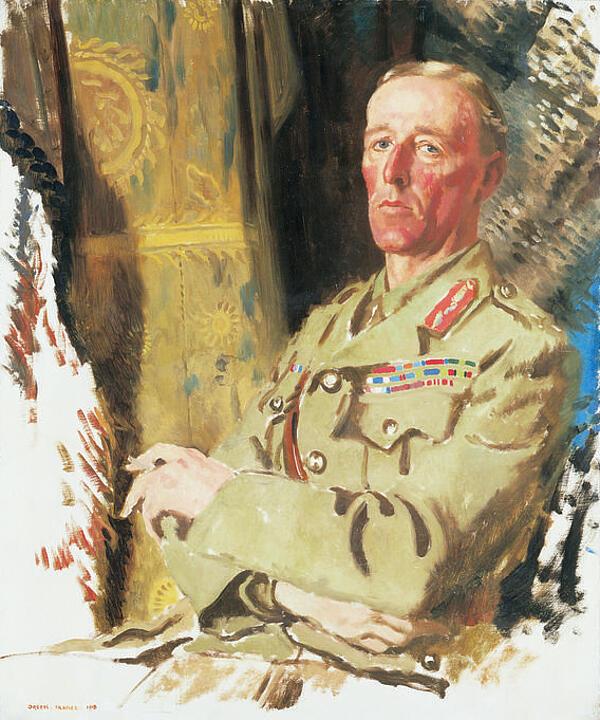John 'Galloping Jack' Seely
John ‘Galloping Jack’ Seely was commander of the Canadian Cavalry Brigade at Moreuil Wood in March 1918 and was responsible for leading the last major cavalry charge of World War One.
As World War One progressed, many had adopted the opinion that cavalry as obsolete at a front line weapon, with weapons such as the machine gun making cavalry charges incredible dangerous and - during the wetter parts of the year - almost impossible due to the mud. Trenches were also well-protected thanks to barbed wire and artillery, which would have been very difficult for horses to tackle.
Seely felt very differently, believing that the cavalry charge was the highest embodiment of courage. Many suggest he belonged in a previous era where cavalry ruled the battlefield; this attitude of his may have been influenced by his privilege upbringing and education at Harrow and Cambridge.
Seely had joined the Hampshire Yeomanry and fought in the Second Boer War and believed that it was important that he led from the front and by example. As a result of his attitude, he was awarded the Distinguished Service Order (DSO) in 1900. He then became MP for the Isle of Wight and began a long political career that was only interrupted by World War One.

In 1912, Seely had been appointed Secretary of State for War, but he was forced to resign following an incident in Ireland at Curragh. However, he rejoined the army and was appointed commander of the Canadian Cavalry Brigade, which contain three regiments.
Seely soon built on his already strong reputation as a man devoted to leading from the front, in a way that was sometimes considered dangerous, particularly when it was achieved on horseback. However, Seely truly believed in the value of cavalry in spite of the situation on the Western Front.
He was aware of the difficulties that faced cavalry, including artillery, barbed wire, machine guns and snipers. However, when the weather was on his side and he had well-trained tops, he still believed the cavalry charge was effective.
Seely was to test his convictions in March 1918 in Moreuil Wood near Amiens. Aged 51, Seely led a cavalry charge as part of an Allied campaign to stop the advance of the German Spring Offensive. Involving just 12 men, the charge lost five men. In spite of this, it was considered effective and a major cavalry charge then took place.
Despite being supported by the Royal Flying Corps (RFC), the attack in Moreuil Wood (which was littered with machine guns as the Germans were expecting a tank attack) resulted in a high casualty rate. While many had fallen, Seely an a few other men made it into the woods and, what was considered the last major cavalry charge, began to engage in hand-to-hand fighting with the enemy. The Canadians eventually got the upper hand and defeated the Germans.
Unfortunately, the win cost the Allies half of the horses and a quarter of the men who had set off. However, the Germans had successfully been halted.
Sadly, shortly after his victory, Seely became the victim of a poison gas attack as he rode to his next post. He had gone to help a men who had fallen into a shell hole after being gassed, but seemingly forgot that gas sinks. As he got into the shell hole, Seely inhaled the gas and so ended his time in the war.
Seely returned to politics once the war was over and gained ministerial rank once more. In 1926 he was also made chairman of the National Savings Committee and co-ordinated its activities during World War Two. He also also made Lord Lieutenant of Hampshire between 1918 and 1947.
John ‘Galloping Jack’ Seely died aged 79 on 7th November 1947.
MLA Citation/Reference
"John 'Galloping Jack' Seely". HistoryLearning.com. 2025. Web.
